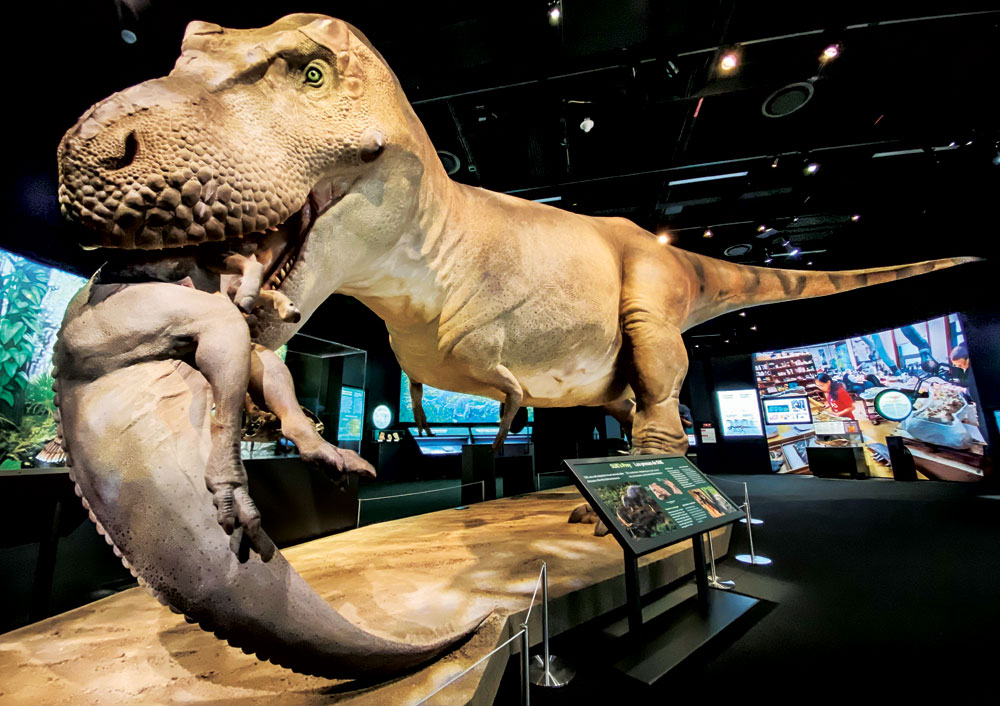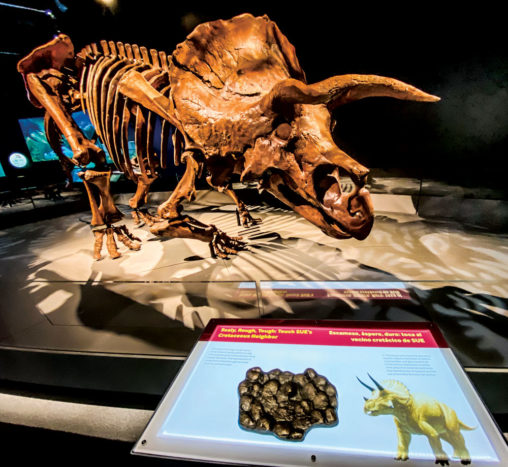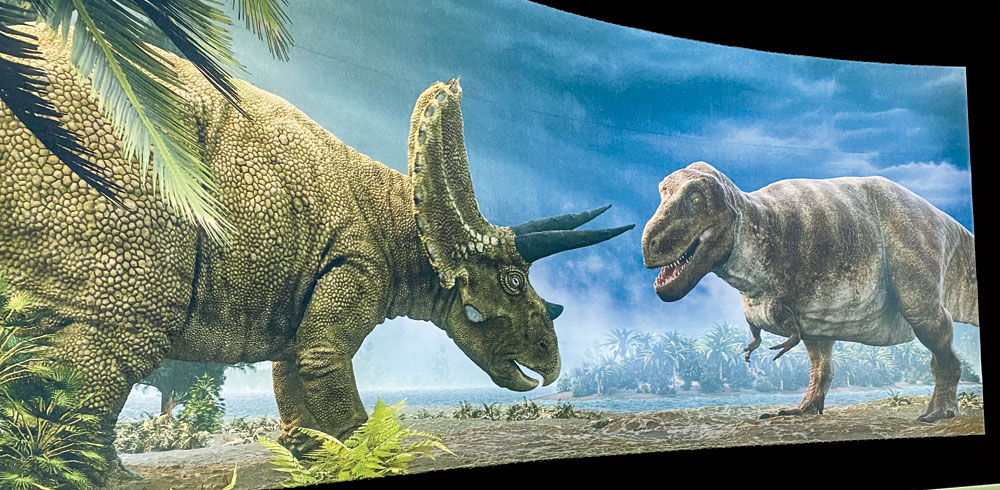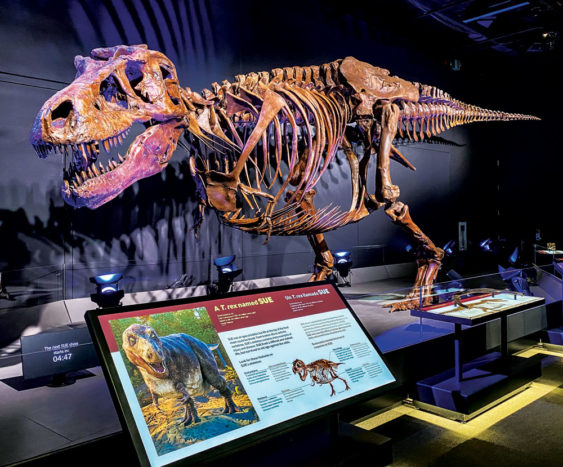
A full-sized replica of Tyrannosaurus rex devouring a duck-billed Edmontosaurus gives visitors a glimpse of what life must have been like 67 million years ago when dinosaurs roamed Colorado.
![]()

3-D exhibits designer, Charlotte Wallis, puts the finishing touches on a life-size replica of a Tyrannosaurus rex, one of the largest predators to ever roam the earth.
More than 60 million years after dinosaurs roamed Colorado, a Tyrannosaurus rex has returned to the region to thrill and enlighten visitors of all ages at the Denver Museum of Nature and Science. “Sue the T. rex Experience” features the largest, best-preserved Tyrannosaurus rex ever discovered. The exhibition includes an exact cast of Sue’s skeleton measuring 40 feet in length, touchable bronze casts of Sue’s bones, a full-size replica of a T. rex devouring a smaller duck-billed dinosaur, and giant video screens with animations of Sue’s swampy habitat. There’s also a simulator to hear and feel the vibrations of Sue’s mighty roar and an interactive computer game to test one’s “Sue I.Q.”
— Click for a video preview of the Sue Exhibit —
Vince Morris, an educator and guide at the museum, says the exhibit highlights new science that is emerging about the Tyrannosaurus rex. Sue’s skeleton features belly ribs, called gastralia, which make the dinosaur appear more barrel-chested than previously believed. In a multi-media light presentation, audiences learn that Sue lived to be quite old—28 years—despite the fact that the skeleton shows more than a dozen injuries and evidence of an infection in Sue’s jaw that ultimately may have been the cause of death. “We’ve learned a lot from Sue, but there are still many unanswered questions,” says Morris. “Did dinosaurs have feathers? Did they have lips? Was Sue male or female? And what were Sue’s tiny arms used for?”

In 2017, construction workers in Thornton discovered the bones of a Torosaurus, which is now being studied at the Denver Museum of Nature and Science. A replica of that skeleton is now on display on the second floor of the museum, and this Torosaurus appears in a mural in the Sue exhibit.
Sue, named for the woman who discovered the fossil in South Dakota in 1990, is permanently housed at the Field Museum in Chicago. The traveling exhibit also includes a full-size replica of a Triceratops, a fierce rival of the T. rex in the Late Cretaceous period. The Triceratops was a heavily armored creature with a large bony frill on the back of its head and three large horns protruding above its snout.

The head of a Triceratops was one-third the length of its entire body and sported three large, forward-jutting horns, and a menacing studded frill on top.
The Denver Museum has used the Sue exhibition to display some of its own fossils including a Torosaurus, a rare cousin of the Triceratops, which was unearthed in Thornton in 2017. Named “Tiny” by the students at the school adjacent to the site where the dinosaur was found, the fossil is the most complete Torosaurus ever unearthed and has never before been exhibited at the museum. Also on display are the tail and leg bones of a T. rex discovered in Littleton.

Large video screens featuring a variety of dinosaurs show what Sue’s world probably looked like 67 million years ago in the late Cretaceous period.
Morris says the exhibit serves to remind visitors that the museum is more than just a place where items are on display, it’s a vibrant research center where scientists are constantly making new discoveries. “We want to inspire future paleontologists. Colorado was once a hot-spot for T. rexes and Triceratops, so there are likely many more fossils out there just waiting to be discovered,” says Morris.

Sue is the most intact Tyrannosaurus rex ever discovered with 90% of the fossil recovered. The skeleton features belly ribs (called gastralia) which helped the dinosaur breathe. Scientists believe the jaws of the T. rex were so powerful they could crush a car.
Since the 100-day closure that followed the initial stay-at-home orders last March, the Denver Museum of Nature and Science is open every day at 25% capacity, with mask and social distancing requirements. The Sue exhibit requires an additional fee for a timed ticket for entry. Sue will be on display until April 25.
Front Porch photos by Christie Gosch


0 Comments